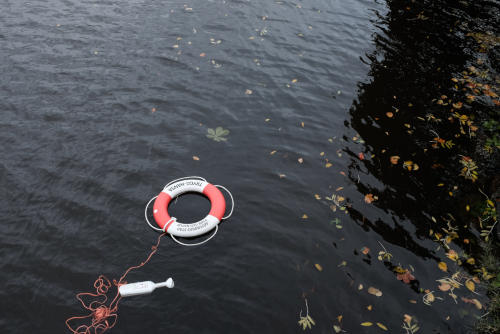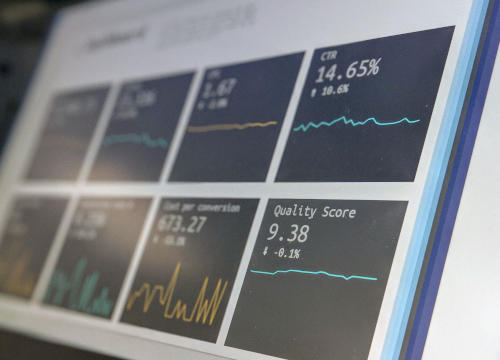Insurance Explained

Insurance companies take risks off individuals, but the risk do not disappear—they are simply transferred from individuals to the insurance company. Insurance companies have developed all sorts of techniques to handle these risks and they all use a common playbook. You don’t have to reinvent the proverbial wheel to become your own insurer, however—just follow the same playbook they do!
Where do your premiums go? Why do they cost what they do? How do insurance companies protect themselves against catastrophic losses? Insurance is about managing risk—particularly large ones, and a well-run insurance company needs to manage these risks just as much as an individual.
So let’s dig into exactly how insurance companies work. Once you have a clear understanding of how insurance works, you can create your own mini-insurance company to suit your own needs and cut out that middle man!
Insurance Floats

Clients pay an insurance company premiums to take on a risk. Later, when the risk materializes, the client files a claim in order to recoop their loses. The float refers to the money that insurance companies collect in premiums before claims are paid. The float is, essentially, an interest-free loan to the insurance company! But wouldn’t you rather make interest-free loans to yourself? Yeah, exactly. That’s one reason we prefer self-insurance.
The insurance company will invest the float as they see fit. Most often, the float is invested in relatively low-risk investments to minimize the chance losses. Additionally, investments are usually liquid—they can be turned into cash quickly—so the insurance company can pay out claims as needed.
Insurance companies live and die by their floats. Most insurance companies do not collect enough in premiums to cover claims and overhead costs—the shortfall is covered by investing the float.
Let’s take a fictional auto-insurance company called Turtle Insurance. They find 100 people who will pay them $100/month. The $100/month is the premium the client pays. The first month, the insurance company has collected $10,000 (100 people × $100). This is the float.
Turtle Insurance, of course, does have expenses so some of the premiums will go towards paying employees, renting offices, buying stationary, etc. But for simplicity, we’ll ignore those expenses for now. The $10,000 collected in premiums will become the company’s float.
The company decides to invest the float in low-risk treasury bonds that earn 3% annually. After a year, that $10,000 will generate $300 in extra income!
This continues, month after month, year after year. The float continues to grow—not just from additional premiums, but also from the returns that the investments generate.
Then one of the clients has an accident and files a claim.
The Claims Process

In an ideal world, when you file a claim, the insurance company would immediately come back and cover your claim. Unfortunately, we do not live in an ideal world and unethical people will often file false claims or exaggerate their loses to get more money than they really deserve. So claims need to be investigated. For small claims, they may not investigate too closely—it doesn’t make much sense to spend more money investigating a claim than it does just to pay it out! But if it’s a large claim, the investigation could take weeks, months or—in extreme cases—years.
Investigating claims comes at a cost—a cost that, if you self-insure, you do not have. After a bad car accident, maybe an insurance company will spend $1,000 investigating the claim. It’s a necessary part of their business, but not necessary for someone who is self-insured and that’s immediately a thousand bucks saved.
And this, of course, is assuming that the insurance company is making a good-faith effort in paying out claims. They might drag out the claims process so they can keep the money in their account longer and continue collecting interest on the float while dragging their feet.
Even worse, the company might decide to deny the claim. Maybe it’s a shady company that has a policy of denying claims in the hopes that policyholders will just give up on the claim. Or they find a loophole that lets them out of paying the claim. Or find enough problems with your claim to think they can wiggle out of paying the claim. If it’s a legitimate claim, you can fight it—but it might require paying a lawyer and taking the matter to court. That’s more money out of your pocket even if your claim ultimately prevails.
So a distinct advantage to self-insurance: your claims will never be denied! And because no investigation is required, you can pay claims from your self-funded float immediately.
Deductibles, Co-Insurance and Co-Payments

Deductibles, co-insurance and co-payments are all different mechanisms for sharing risk with an insurance company. You assume part of the risk and an insurance company assumes the rest of the risk.
If the policy has a deductible, you will be on the hook for the amount of the deductible before insurance kicks in. Let’s say an accident victim with $5,000 in damages had a $500 deductible. In that case, the client would need to cover the first $500 in damages before the insurance company covers the rest of the $4,500 in damages.
The deductible is the amount of risk that you personally are willing to take on while everything above that is risk that you are passing on to an insurance company. Because there is less risk for an insurance company—you’re covering some of the risk yourself—they’ll require smaller premiums than from someone who wants the insurance company to assume all risks.
Co-insurance splits the insurance risks in the form of a percentage. So if you have a $10,000 claim but signed up to co-insure 10% of the risks, you would be on the hook for $1,000 while the insurance company would be on the hook for the other $9,000. The more of the risk that you are willing to assume (and therefore the less risk the insurance company faces), the lower your premiums will be.
And finally there are co-payments where you are on the hook for a fixed amount. These tend to be popular for things like a doctor's visit or prescription medications. The co-payments are usually fairly small and likely won’t reduce your premiums much, but insurance companies use them to discourage people from making frivolous visits to the doctor or for unnecessary medications. There’s no cure for the common cold and visiting a doctor won’t really help, so insurance companies don’t want people running to see an expensive doctor every time they get the sniffles.
If there was no co-payment, a lot people might think: Why not? It’s not costing me anything! Even with a small $10 co-payment, the same person might think: Well, do I really want to spend ten bucks for a doctor’s visit that probably won’t help? By discouraging frivolous visits, insurance companies save money and can therefore charge clients lower premiums. The co-payments are typically fairly small, however, because they also do not want to discourage people from visiting a doctor who really need help!
These are all ways that insurance companies can manage their own risk, and they are all options you can work into your own self-insurance policies—especially in the beginning when you may not have a very large float to work with.
There’s an important thing to recognize here...insurance companies need a large enough float to cover claims. If the claims exceed the float, the company will be effectively bankrupt. When you self-insure, you must have enough float to cover your potential claims or you will wind up effectively bankrupt as well.
Ideally, you would structure your self-insurance policies so that you can cover all of your claims from your float, but if there’s a risk too large for the float to handle—deductibles, co-insurance and co-payments are all techniques you can use to offload some risks.
Deductibles you can offload to yourself—for example, claims less than $500 will come out of your paycheck rather than your float. Or you can assume a large deductible and offload additional risk to an outside insurance company— for example, the first $5,000 in claims will come from your float and anything above that will be insured by an outside company. Or even a combination of both—for example, the first $500 in claims will come from your paycheck, the next $5,000 will come from your float, and any claims above that will be paid by an outside insurance company.
The more risk you can assign to yourself, the more money you will save in the long run. If your float can cover a large $5,000 deductible, you’ll save a lot more in the long run than a float that can only cover a $100 deductible. But even a small $100 deductible is still better than no deductible at all. Over time, as your float grows, it will be able to cover more and larger risks.
Actuary Tables

Insurance companies use actuarial tables to calculate the risk of a certain event happening. They might know, for instance, that the average person gets in a car accident once every 10 years, and they know that the average claim for a car accident is $12,000. (These are not actual statistics—just made-up examples!) So with that information, Turtle Insurance knows that they can expect about 120 premium payments (10 years × 12 months/year) and will have to pay out $12,000 in claims during that time—which means they need to collect at least $100/month in premiums ($12,000 ÷ 120 months) just to break even. On average!
Large insurance companies have a lot of data about how often claims are filed, typical amounts for a claim, characteristics of which kinds of people tend to file what types of claims and so forth. As a self-insurer, you probably won’t have access to that sort of information, but for the most part, you don’t really need it. You can piggyback on the work that these insurance companies have already done for you.
You know that they've structured their policies to make a profit—or at least break-even. The company would go out of business otherwise! So let’s say you were taking a trip and thinking about travel insurance. You could get a quote from one or more companies and check out what a typical company might charge to insure your trip—then copy that policy for your own use. At the very least, it’s a starting point for creating your own policies or it can tell you if your policies are reasonable.
Reinsurance

There’s another layer in the insurance business: reinsurance. Imagine Turtle Insurance sells earthquake insurance in the San Francisco area. The problem they have, however, is that their geographic region is constrained to a very small area and if the Big One happens (and it will happen!), they’ll have to cover a lot of very large claims. They could go for decades without a single claim then BAM! Massive claims that overwhelm their float.
In cases such as this, the insurance company can sell part or all of their risk to an even larger, more diversified insurance company called a reinsurer. It’s an insurance company for insurance companies. Turtle Insurance might pay 90% of the premiums they collect for earthquake insurance to Mammoth Insurance so, in the event of a destructive earthquake, Mammoth Insurance will have to cover the claims. But Mammoth Insurance also reinsures businesses in hurricane-prone Florida, earthquake-prone Seattle and tornado-prone Omaha so their float is much larger and can handle the large claims from a disaster in a single location.
When you self-insure, you too can also pass on some of the risks of your insurance policy. Perhaps you feel comfortable insuring your car—but only up to $1,000. If your car is worth $10,000, you can buy insurance to cover the difference. Effectively, you’re using reinsurance and the $1,000 is your deductible. When a risk is too big for you to handle on your own, then it’s time to reinsure.
This is, of course, just a rough overview of how the insurance industry works, and policy details can be endlessly complex, but a good understanding of these basics are necessary to self-insure yourself. You must understand how to assess the risks you underwrite, reinsure risks that your float cannot cover, and invest your float!
